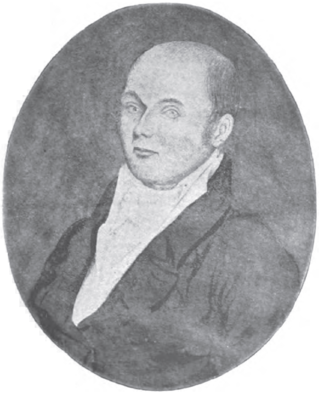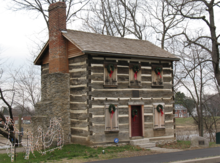
The Miami Valley is the land area surrounding the Great Miami River in southwest Ohio, USA, and includes the Little Miami, Mad, and Stillwater rivers as well. Geographically, it includes Dayton, Springfield, Middletown, Hamilton, and other communities. The name is derived from the Miami Indians.

Robert Cumming Schenck was a Union Army general in the American Civil War, and American diplomatic representative to Brazil and the United Kingdom. He was at both battles of Bull Run and took part in Jackson's Valley Campaign of 1862, and the Battle of Cross Keys. He served two separate multi-term stints in the U.S. House of Representatives.
Joseph Halsey Crane was an attorney, soldier, jurist, and legislator. He was born in Elizabethtown, New Jersey He was the son of General Wiliam Crane and Abigail (Miller) Crane and the grandson of Stephen Crane, member of the First Continental Congress, his brother was Colonel Ichabod B. Crane.

The Ohmer fare register was, in various models, a mechanical device for registering and recording the fares of passengers on streetcars, buses and taxis in the early 20th century. It was invented and improved by members and employees of the Ohmer family of Dayton, Ohio, especially John F. Ohmer who founded the Ohmer Fare Register Company in 1898, and his brother Wilfred I. Ohmer of the Recording and Computing Machines Company of Dayton, Ohio. This latter company employed up to 9,000 people at one time and was a major manufacturer of precision equipment during World War I. It was subsequently renamed the Ohmer Corporation and in 1949, acquired by Rockwell Manufacturing Company.

Charles Insco Williams was an artist and architect in Dayton, Ohio.
Israel Ludlow was a government surveyor who helped found Cincinnati, Dayton and Hamilton in southwest Ohio.

John Allen Shauck was a Republican politician in the U.S. State of Ohio who was an Ohio Supreme Court Judge 1895–1914.

Benjamin Van Cleve was a pioneer settler of Dayton, Ohio in the United States. He held several offices in the town.

Wolf Creek is a 19.8-mile-long (31.9 km) tributary of the Great Miami River in southwestern Ohio in the United States. It rises in western Montgomery County, northwest of Brookville, and flows generally southeast, passing through the center of Trotwood and joining the Great Miami in downtown Dayton.
Little York is an unincorporated community in Butler Township, Montgomery County, Ohio, United States. It is located on the east bank of the Stillwater River, at the intersection of Little York Road and Meeker Road, not far from the intersection of I-70 and Ohio State Route 48.
William Cortenus Schenck (1773–1821) was a pioneer surveyor, militia general and legislator. Two of his sons were prominent military men.
Airhill is an unincorporated community in Montgomery County, in the U.S. state of Ohio.
Amity is an unincorporated community in Montgomery County in the U.S. state of Ohio.
Bachman is an unincorporated community in Montgomery County, in the U.S. state of Ohio.
Dodson is an unincorporated community in Montgomery County, in the U.S. state of Ohio.
Harries is a historic community in Montgomery County, in the U.S. state of Ohio.
Tadmor is an extinct town in Montgomery County, in the U.S. state of Ohio. Its location, 39°53′45″N84°9′55″W, is now within the Vandalia city limits.
Taylorsburg is a neighborhood of the city of Trotwood in northwestern Montgomery County, Ohio, United States.
Arlington is an unincorporated community in Montgomery County, in the U.S. state of Ohio.
Morris Seely (1795–1847) was an American businessman and politician who served on the Ohio Senate, Ohio House of Representatives, and as mayor of Dayton, Ohio. His failed canal project through Dayton's South Park neighborhood came to be known as "Seely's Ditch" or "Seely's Folly" and still has an impact today of projects in the area.







